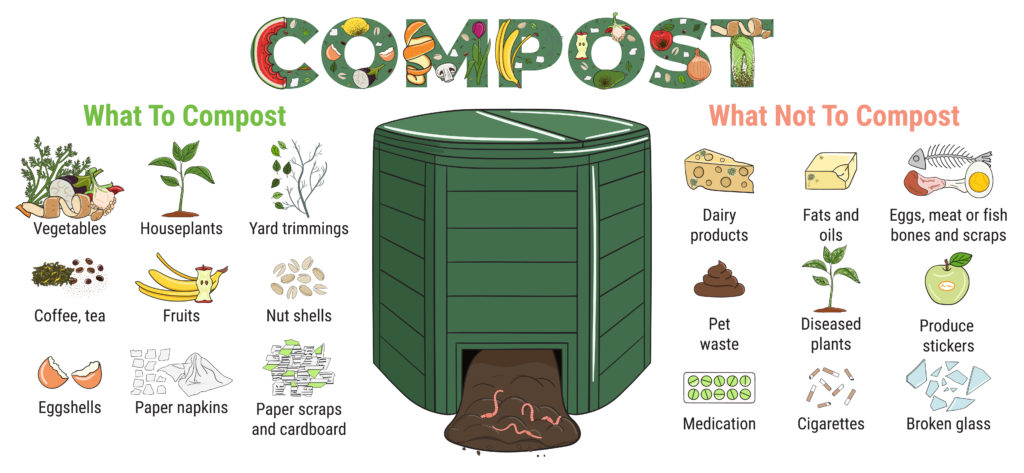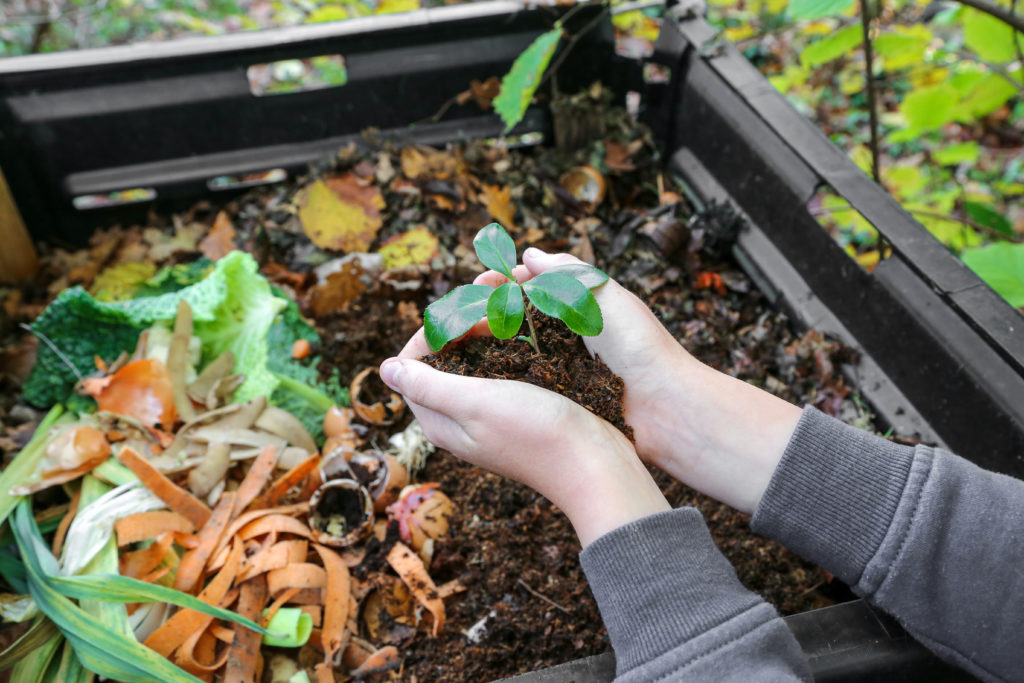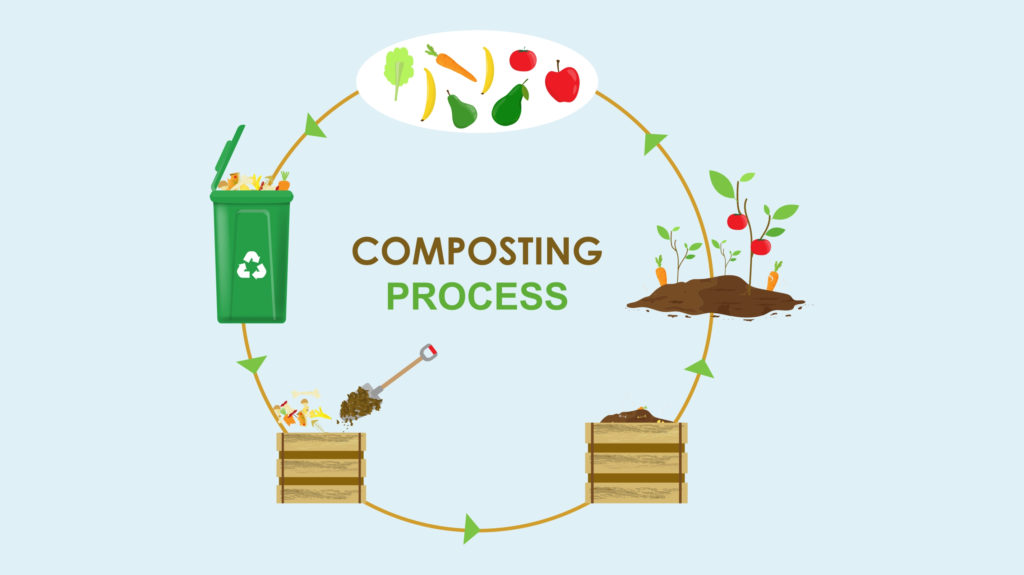Composting is an aerobic method of decomposing organic solid wastes. It can therefore be used to recycle organic material. The process involves decomposing organic material into a humus-like material, known as compost, which is a good fertilizer for plants.
Environmental Benefits of Composting
There are many benefits, including reducing landfill waste, methane emissions, and the need for chemical fertilizers. It reduces the amount of waste that goes to landfill, it reduces methane emissions from decomposing organic matter, and it creates a nutrient-rich soil amendment. It also helps to reduce the need for chemical fertilizers and can be used as a natural fertilizer.
How to Compost
To start, you will need a bin or container, some organic material, and a source of air. You can either buy a commercial compost bin, or build your own. The organic material can be anything from kitchen scraps to leaves and grass clippings. And the source of air can be as simple as a hole in the bottom of the bin, or a fan. Once you have your bin, organic material, and air, you will need to mix them together. The ratio of organic material to air should be about 30:1. You can either do this by hand, or with a compost tumbler.
Once the organic material and air are mixed together, you will need to add water. The amount of water will depend on the type of organic material you are using. For example, kitchen scraps will have more moisture than leaves and grass clippings. The goal is to have the mix be as moist as a wrung-out sponge.
After adding the water, you will need to turn it every few days. This aerates the matter and speeds up the decomposition process. If you are using a commercial bin, there may be a turning mechanism built in. If not, you can simply turn it with a shovel or pitchfork.
Depending on the type of organic material you are using, it can take anywhere from several weeks to several months for your compost to be ready. Once the compost is ready, you can use it on your garden or lawn, or just discard it.
What can be Composted?
There are many types of organic material that can be composted, including kitchen scraps, leaves, grass clippings, wood chips, and animal manure. Others include coffee grounds, egg shells, and newspaper. The key to successful composting is using a mixture of different types of organic material, as each type will contribute different nutrients to the final compost product. Additionally, it is important to avoid including any non-organic materials in your compost bin, such as plastics or metals.

Biodegradation
Biodegradation is the decomposition of organic matter by microorganisms. It is a natural process that occurs in the environment, and it is typically slow. There are many different types of biodegradation, with each type involving a different set of microorganisms and chemical processes.
Aerobic Composting
Aerobic composting uses oxygen to break down organic matter. This is the most common type, and it can be done either indoors or outdoors.
Anaerobic Composting
Anaerobic composting doesn’t use oxygen to break down organic matter. This type is typically done outdoors, as it produces methane gas, which is a greenhouse gas.
Vermicomposting
Vermicomposting uses worms to break down organic matter. This is typically done indoors, as it doesn’t produce any methane gas.
Composting at Home
To start at home, you will need a bin or container, some organic material (such as kitchen scraps), and a source of air (such as a hole in the bottom of the bin or a fan). You can then mix the materials together, adding water as needed, and turn the compost every few days to aerate it and speed up the decomposition process. Once your compost is ready, you can use it in your garden or lawn, or simply discard it.
Carbon Credits
Carbon credits are a unit of measure that represents the reduction of one metric tonne of carbon dioxide equivalent. They can be traded in a carbon market, and they can be used to offset greenhouse gas emissions. Composting projects play an active role in carbon markets, as they help to reduce methane emissions from organic waste. By generating carbon credits through composting, these projects can offset the greenhouse gas emissions associated with industrial activities or household consumption.
Composting in the United States
In the United States, there are several different types of facilities, including industrial facilities and community composting facilities, and home systems.
Industrial Composting Facilities
Industrial facilities are typically large-scale operations that process organic waste from businesses and industries. These facilities use a variety of mechanical and biological processes to break down the organic waste into compost.
Community Composting Facilities
Community composting facilities are smaller-scale operations that process organic waste from households and businesses. These facilities often use a combination of mechanical and biological processes to break down the organic waste into compost. Community facilities are present in a wide range of countries including the United States, Canada, Australia, and the United Kingdom.
Home Composting Systems
Home systems are small-scale operations that process organic waste from households. These systems typically use a combination of mechanical and biological processes to break down the organic waste into compost.

Although there are several different types of facilities in the United States, all of them play a role in reducing greenhouse gas emissions. By generating carbon credits through composting, these facilities can offset their own greenhouse gas emissions, as well as the emissions resulting from industrial activities or household consumption around the country.
European Union
In the European Union (EU), composting is regulated under the Waste Framework Directive (2008/98/EC) and the Landfill Directive (1999/31/EC). The Waste Framework Directive sets targets for the reduction of biodegradable municipal waste going to landfill, and the Landfill Directive requires that biodegradable municipal waste be treated in an environmentally sound manner before being disposed of in a landfill.
In order to meet these directives, the EU has implemented a number of policies and programs to encourage the use of composting, including financial incentives, awareness-raising campaigns, and educational programs. The European Commission also provides guidance on best practices, and it monitors progress towards the directive’s targets.
As a result of these policies and programs, the composting industry in the EU has grown significantly in recent years. In 2013, the EU had over 3,000 composting plants, with a capacity to treat more than 7 million tonnes of organic waste per year.
Brazil
In Brazil, the city of Sao Paulo has been working on a project to reduce methane emissions from its solid waste landfill. The city has been collecting organic waste from households and businesses, and it has been using a variety of mechanical and biological processes to break down the organic waste into compost. The compost is then used to fertilize crops, which helps to offset the methane emissions from the landfill.

